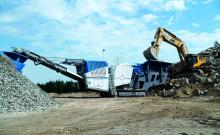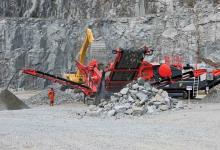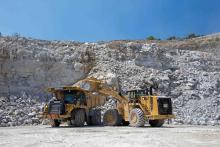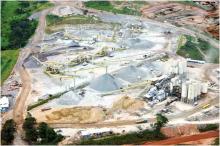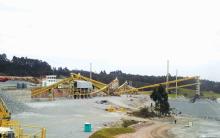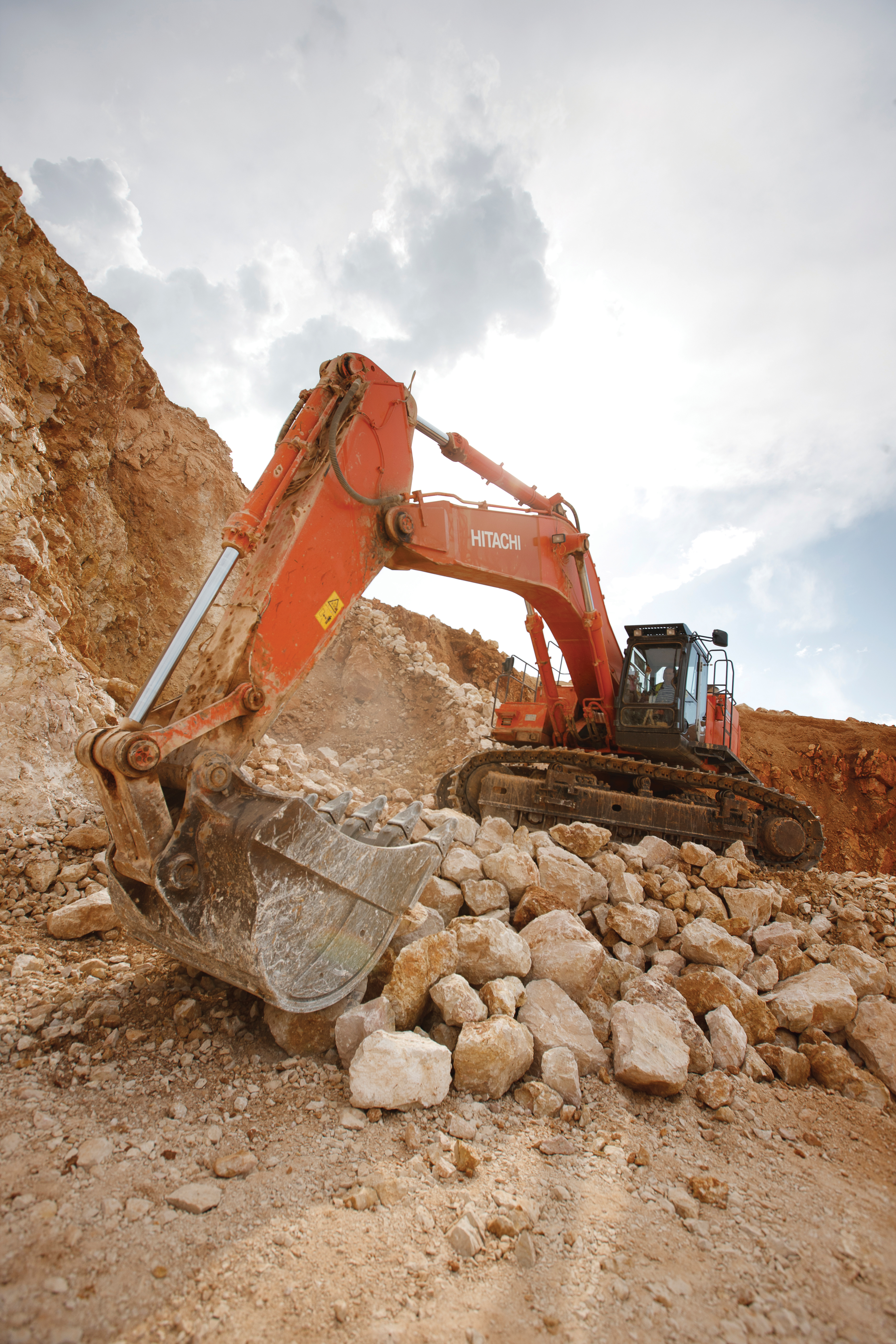
Portugal has been hit hard by the recession, but its mining sector could be worth billions. Julie-Anne Ryan reports
Portugal has been one of the worst-hit countries in recent years in terms of the recession in Europe. Inevitably, its construction industry has been struggling, with logical consequences on quarrying and aggregates markets.
But despite falling figures and cessation of major projects, both the industry association
Historically, Portugal’s membership of the
But after the financial crisis hit, Portugal had to take a bail-out from the EU in April 2011, and the leading players in the construction industry have been fighting to minimise the impact of the recession.
The latest news from the government is optimistic for the mining industry as a whole, though, as economy minister Alvaro Santos Pereira said recently that “the mining sector in Portugal could be worth twice the national GDP, something like €340 billion.”
ANIET (National Association of Extractive and Manufacturing Industry) is the Portuguese aggregates association, and it represents the organisations involved in the extraction, processing and marketing of industrial rock (aggregates), ornamental rock and mines, as well as equipment companies, products and services related to the activity of the sector. It represents 80% of that national production sector.
The most recent data available on the aggregates industry is from 2010, from the government department DGEG (General Direction of Energy and Geology).
The quarries are mostly in the north of the country, where they produce granite; the centre, predominantly limestone; and in the large region around the capital Lisbon. There are still only a vanishingly small number of companies producing recycled aggregates.
“We estimate that between 2008 and 2012 there has been a decrease of 40% in aggregates production,” stated ANIET. “There was a big decrease, in Portugal, in construction and public works. The only aggregate market is the domestic market: the unit price of raw materials does not support high transport costs.”
Aggregates currently represent the largest proportion of production within the extractive industry, at 41% of the total. Metal ores comprise 33% of the sector and industrial minerals 4%. Included in the term “construction minerals” are ornamental rocks (2,856,358tonnes worth €186,695,000) and industrial rocks including aggregates (57,983,781tonnes/€313,190,000).
In 2010 there were 340 Portuguese aggregates businesses, 175 of which dealt in crushed stone granite; 76 in crushed stone limestone and 86 in sand and gravel. But there are not many major players in the market.
Only two businesses are worth between €20 million and €50 million: Agrepor Agregados-Extracção de Inertes and Lena Agregados-Comércio de Agregados. Five are worth between €10 million and €20 million (Secil Britas; Monteadrianos-Agregados; Sorgila-Sociedade de Argilas; Sibelco Portuguesa; and Sifucel-Silica.
Ten or so companies have a business volume of between €5 million and €10 million, and these are mostly small and medium-sized enterprises.
But what of the way forward? It appears that emerging markets, especially in the East, Africa and Latin America are good drivers in general, says ANIET.
“The slowdown of industry causes a bigger external dependence and increases unemployment, so growth is vital to generate a wealthier society. In Portugal we think there will be a great reduction of companies that explore quarries. Some companies will disappear, and others will merge.”
| Portuguese Aggregates 2010 |
TONNES |
EUROS |
|---|---|---|
| Crushed rock (granite) | 27,460,450tonnes | €198,251,000 |
| Crushed rock (limestone) | 21,892,509tonnes | €80,102,000 |
| Sand and gravel | 8,630,822tonnes | €34,837,000 |
| TOTAL |
57,983,781tonnes | €313,190,000 |
The organisation also pointed out that “in spite of the current clime of shrinking economies the Third European Conference on Minerals (held in Madrid, Spain in 2010) underlined an increased demand for raw material in the next 5-10 years, even considering the increase of recycling.” This could mean demand in Europe of up to four billion tonnes per year.
The task ahead of the industry in Portugal is an adjustment to the tougher market conditions it now faces. It needs to innovate products, manufacturing process and management models. To do better, in effect, with less money. Today the principal problem is the restriction of the bank credit that is the main source of companies’ finance. It is also necessary to reduce production costs, giving industry more favourable energy prices.
And there are other specific problems of the extractive industry: ANIET has recently delivered to the Ministry of Economy several proposals to simplify the licensing of quarries and to extend the deadline for payment of bail imposed by the Environment Department.
“It is also necessary to better inform public opinion about the benefits of the extractive industry because there are still many environmental restrictions, and to give more incentives for rehabilitation of the cities.
“Portugal already has too much new construction and excellent roads,” continued the ANIET spokesperson.
“In the last 20 years the Portuguese industry has lost importance, and now the services are dominant. But because of the economic crisis, and to increase exports, the Portuguese government is seeking to improve on the exploitation of ornamental rocks, metal ores like gold, iron and copper. We are a great producer of copper.” Already this year the government has signed several contracts with various international companies to explore metal ores in Portugal.
Overall the country’s extractive sector represents 2.3% cent of exports: 53% metal ores, 40% ornamental rocks, 2% industrial minerals and 5% water.
One leading construction conglomerate
The government is encouraging economic recovery by issuing a series of tenders through Estradas de Portugal (Roads of Portugal), the agency responsible for administering the roads.
One of these projects is the 567km extension to the IC3, a two-lane motorway that stretches north from the municipality of Entroncamento to the north of Coimbra in central Portugal. The total investment will be €939 million and it is scheduled to run for three years, having begun in February 2010.
Mota-Engil is working on seven other public/private partnerships and is directly responsible for over 50% of the IC3 route, including a 16km stretch from Carvalhais to Almalaguês, which is scheduled to be completed in November 2012. The total volume of materials required is 3.6million m³, including 30-40,000m³ of concrete, 400,000 tonnes of tous-venant and 200,000 tonnes of asphalt.
A new
While the concrete comes from Mota-Engil’s own plant at Penela, it sources the majority of the aggregates from Agrepor, part of the Lisbon-based
These are delivered from Agrepor’s 35-year-old, 25hectare Condeixa-a-Nova Quarry, the second-largest in the group.
The high-quality limestone quarry produces one million tonnes per year: half is extracted for crushing and processing, and half is delivered to one of the group’s cement factories. To achieve this level of production, 2,000tonnes of materials are blasted every other day.
The company’s four-year-old Hitachi ZX670LCH-3 loads the rocks on to three rigid dump trucks in seven passes with its 4m³ bucket. The materials are then transported 600m to the primary crusher, after which they go through the separation process (0-80mm aggregates go to the washer, while five other sizes go through the dry process although the final products are quite similar: 0-38 and 80-200mm dry, for roads and concrete; 0-2 and 2-8mm wet, for concrete; and 0-6, 5-15 and 15-25mm mixed.
On average, between 80-90% of aggregates are delivered to customers, but it is as high as 99% in this quarry.
“We have been able to continue selling materials within the group and develop new markets during the recession,” says Agrepor quarry manager, Luis Carmona. “While other quarries have closed, we have maintained the same level of business with an 80/20 split in terms of internal/external sales respectively.
“The quarry is successful due to the overall strategy of the group. Its main business is cement, then concrete and aggregates. During the nineties there was a huge investment in construction and this had a positive effect. Now, there is not the same level of business, although Mota-Engil Engenharia is projected to be our biggest customer over the next three years.”




